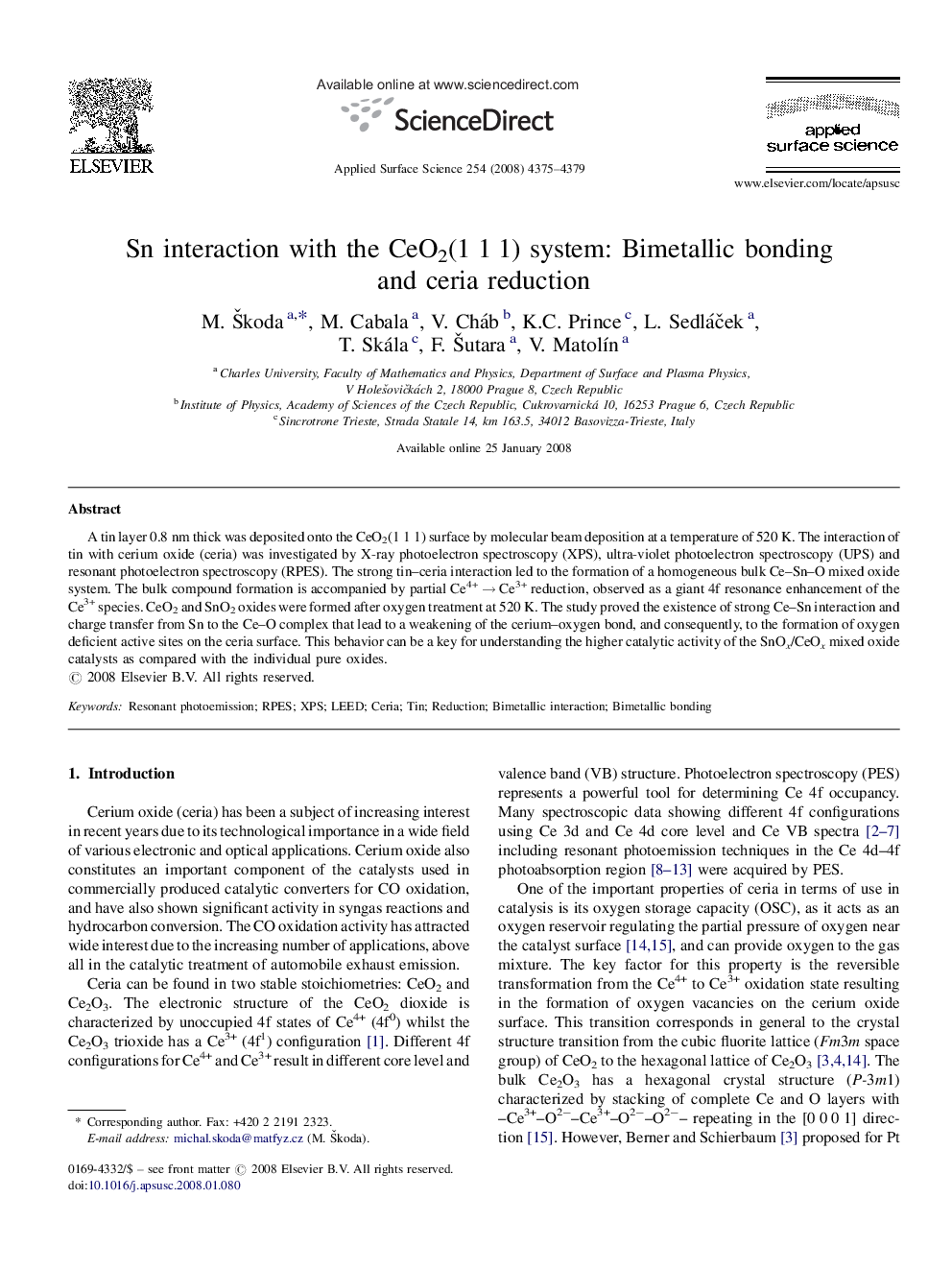| Article ID | Journal | Published Year | Pages | File Type |
|---|---|---|---|---|
| 5364260 | Applied Surface Science | 2008 | 5 Pages |
Abstract
A tin layer 0.8 nm thick was deposited onto the CeO2(1 1 1) surface by molecular beam deposition at a temperature of 520 K. The interaction of tin with cerium oxide (ceria) was investigated by X-ray photoelectron spectroscopy (XPS), ultra-violet photoelectron spectroscopy (UPS) and resonant photoelectron spectroscopy (RPES). The strong tin-ceria interaction led to the formation of a homogeneous bulk Ce-Sn-O mixed oxide system. The bulk compound formation is accompanied by partial Ce4+ â Ce3+ reduction, observed as a giant 4f resonance enhancement of the Ce3+ species. CeO2 and SnO2 oxides were formed after oxygen treatment at 520 K. The study proved the existence of strong Ce-Sn interaction and charge transfer from Sn to the Ce-O complex that lead to a weakening of the cerium-oxygen bond, and consequently, to the formation of oxygen deficient active sites on the ceria surface. This behavior can be a key for understanding the higher catalytic activity of the SnOx/CeOx mixed oxide catalysts as compared with the individual pure oxides.
Related Topics
Physical Sciences and Engineering
Chemistry
Physical and Theoretical Chemistry
Authors
M. Å koda, M. Cabala, V. Cháb, K.C. Prince, L. SedláÄek, T. Skála, F. Å utara, V. MatolÃn,
